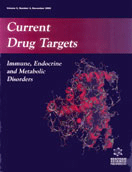Abstract
Non steroidal antiinflammatory drugs (NSAIDs) are among the most frequently prescribed medications worldwide. These drugs are effective for the treatment of a wide spectrum of diseases: musculoskeletal disorders, headhache, fever, pain, and others. Their widespread use explains the very high incidence of intolerance; reactions range from asthma, rhinitis, to urticaria/angioedema, various skin eruptions and anaphylactic shock. The pathogenesis of intolerance is still unclear: immune-mediated reactions have been reported following the use of pyrazolone derivatives and, less commonly aspirin, anthranilic-acid derivatives and diclofenac. It has been suggested that NSAIDs may induce pseudoallergic reactions, while in case of bronchial asthma the inhibition of cyclooxigenase by NSAIDs has been proposed as a pathogenetic mechanism. The diagnosis of NSAIDs sensitivity can usually be established by history; in fact skin prick tests with NSAIDs have not been successful and no reliable in vitro tests are available. The only definitive diagnostic test is oral test dosing. To identify an alternative NSAIDs in a sensitive patient a tolerance test is performed. Here we review the current state of knowledge concerning NSAIDs sensitivity, including personal data to increase awareness on this issue.
 1
1


















